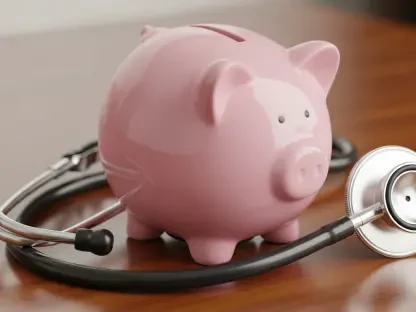Listen to the Article
Remote health monitoring keeps your wellness in check from a comfortable distance, so you don’t have to visit the doctor’s office as regularly. With wearables, your data flows either instantly or intermittently to your care provider, making it easier to keep track of your illness. Experts then use the input from the device to manage your condition, spot risks, and provide you with additional education. This method is especially helpful for ailments like heart disease, high blood pressure, diabetes, and pulmonary illnesses.
Health Conditions That Benefit from Telemonitoring
Telemonitoring is also beneficial for managing and supervising a variety of other issues and services, such as:
Perinatal Care: Helps observe both maternal and fetal health during pregnancy.
Post-Surgical Recovery: Supervises vital signs to ensure proper recovery and early detection in case of any complications.
Obesity and Malnutrition: Keeps track of weight and other indicators to support nutrition and weight management.
Vertigo or Syncope: Checks for symptoms related to dizziness or fainting, providing valuable data for diagnosis and therapy.
Cancer: Scans for symptoms or side effects associated with cancer treatments.
Neurological Disorders: Records the progression of neurological conditions, offering valuable insights into changes in a patient’s status over time.
Types of Remote Patient Monitoring Devices
Observing health from a distance requires specialized software. Here are the most common telehealth gadgets:
Digital Scale: People who want to watch their weight and fluid intake often use digital scales, which are beneficial for conditions like heart disease and diabetes. They allow for weight measurements to be transmitted to medical providers or mobile apps.
Heart Monitor: Smartwatches and heart rate patches are great at tracking rapid heartbeat patterns, particularly among people with arrhythmia and other palpitation irregularities.
Glucometer: Glucometers log blood sugar levels. People can use traditional finger-prick methods or continuous glucose monitors (CGMs), which provide always-active results.
Blood Pressure Monitor: You can record blood pressure continuously with wearable devices or intermittently with trackers that can take readings and send the data to a provider when needed.
Oxygen Monitors: Supervising blood oxygen levels is important for individuals with sleep apnea and lung diseases. Smartwatches with built-in sensors can observe them continuously.
Spirometer: Spirometers are the best tool for lung capacity tests in asthma and chronic respiratory patients. The contraption notes how well a person exhales air and automatically sends this information to their physician.
Fetal Monitor: An abdominal sensor checks the fetal heartbeat during pregnancy. This instrument sends heart rate data to healthcare providers 24/7, but recipients can also choose to send this feedback themselves.
How to Set Up a Remote Monitoring Program for Optimal Outcomes
A remote care management system requires thorough planning together with a complete comprehension of patient requirements to achieve program success. Perform testing to assess their comfort with technology and internet access and determine if they are likely to engage with monitoring devices and continue using them over time. Decide which services to offer, such as managing chronic ailments or providing support for pregnant ladies.
You might choose to focus on one specific condition, like diabetes, or offer services for multiple issues. Set clear goals for the program, such as managing diseases, engaging patients, or improving health outcomes. Decide where people will use the devices, whether at home, in a clinic, or somewhere else.
The implementation process relies on having enough staff. To support the existing team, you may need to create new positions. This includes hiring additional personnel to manage these telehealth programs, oversee recruitment and enrollment processes, and assist with client follow-up initiatives. The users also need continuing technical help and instructions on device operation. Identify the personnel who will check data outside regular business hours to ensure consistent provision.
What to Look for When Selecting Devices
Choosing the right tech for patient monitoring is a team decision—everyone’s input matters. There are a few key things to consider when picking devices and vendors. First, check if the apparatus needs a smartphone to work. This can impact how easy it is for care recipients to operate it. Also, think about whether the device needs manual input or works wirelessly. Both will affect how consumers use it and how smooth the data collection process is. You’ll also need to ensure the device meets The Health Insurance Portability and Accountability Act standards and works well with your Electronic Health Records system.
Next, decide whether you want a single-use or multiple-use gadget. This will affect the cost and long-term sustainability. The instrument also needs to be something patients are comfortable using regularly. Lastly, check that it provides accurate, reliable data—this will directly impact the quality of care and your clinical decisions. When you take all these factors into account, you’ll be on track for successful remote health monitoring.
Building the Right Workflow for Implementation
To begin the program executives need to establish a workflow for patient supervision that helps medical staff and care recipients. The workflow system should include vital components that will enable both launch success and long-term performance success. The success of this initiative depends on team coordination because all staff must contribute input while establishing their roles and maintaining regular review sessions to keep teams aligned.
Construct detailed enrollment standards while delivering complete technological instructions. Additionally, enforce strict follow-up systems that clarify the user’s expectations during system utilization. The implementation phase must include assessing insurance coverage options, coordinating external partnerships, and executing preplanned strategies to manage patient concerns about abnormal data readings.
To check how well your remote monitoring program is doing, you need to set clear key performance indicators. Note how many times people need emergency visits and how often they go back to the hospital, and ask them if they recommend the program. Gathering patient feedback is an essential step to improving the program.
Guiding Recipients Through Device Use
Teaching the end-user about remote patient observation is key to the program’s success. Start by explaining the device technology, how it collects information, and how it sends it to clinicians. Also, discuss potential costs and insurance coverage options based on their plans.
The first appointment should begin with medical need verification before showing the individual how to operate the gadget. Sometimes, users must input extra data for certain apps to report additional symptoms or lifestyle adjustments. Create regular virtual communication systems to analyze feedback and check the recipients’ status.
The system generates notifications when test outcomes fall outside designated settings, requiring users to contact their supervisors. Health personnel will take this data to modify regimens and prescribed medications. Consumers should use the apparatus regularly to manage their well-being successfully during prolonged periods.
Billable Remote Monitoring Services Explained
It should go without saying, but you must get patient consent for the digital health tracking program. The device used for either remote physiological or therapeutic supervision must meet the U.S. Food and Drug Administration’s definition of a medical device. Billable services include:
Remote physiological monitoring, which involves utilizing non-face-to-face technology to track vital signs such as oxygen levels, blood pressure, blood sugar, and weight fluctuations, and
Remote therapeutic monitoring focuses on gathering feedback from therapies, addressing issues like musculoskeletal or respiratory disorders, observing adherence to treatments (such as medication compliance), and assessing responses to remedies like pain management.
Medicare reimburses both methods under specific conditions. For remote physiological monitoring, the prerequisites include having an established patient relationship and observing either an acute or chronic illness. You must collect data for at least 16 days within a 30-day period. Only one healthcare provider can bill for these services for each recipient during this time.
Additionally, these two types of services, although similar, cannot be billed together, and the tracking must be medically necessary. You can charge for these services along with chronic care management, transitional care management, and other coordination services, as long as you don’t count the time twice. During the global surgery period, practitioners who are not receiving the global payment for surgery can also bill for these services.
As far as insurance goes, each state maintains different Medicaid policies regarding telemonitoring, so medical staff must check the individual options of both Medicaid and Medicare. Clinics dealing with private insurance must check with insurance providers to establish correct payment methods. Rural Health Clinics and Federally Qualified Health Centers can bill separately for remote patient monitoring services in addition to their regular coverage.
Final Thoughts: Joint Effort for Optimal Care
By leveraging digital devices, users can now track and manage their well-being from the comfort of their homes, while physicians gain real-time insights to improve patient care. With conditions ranging from heart disease to diabetes, wearables offer immense potential for better health management and prevention. As technology continues to evolve, telemonitoring will likely become even more integrated into the medical infrastructure, reducing costs, and empowering both recipients and providers. By embracing this new era of wellness coming into symbiosis with technology, the medical sector can ensure that people receive the care they need—and expect.









